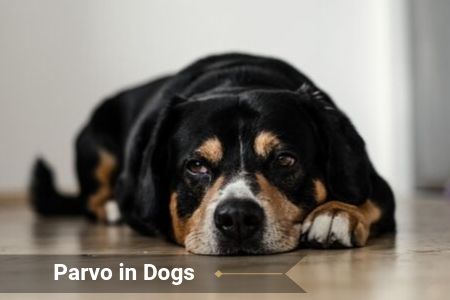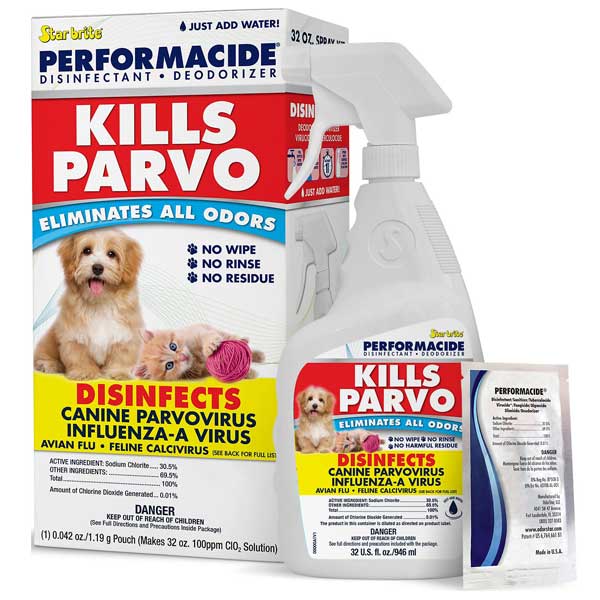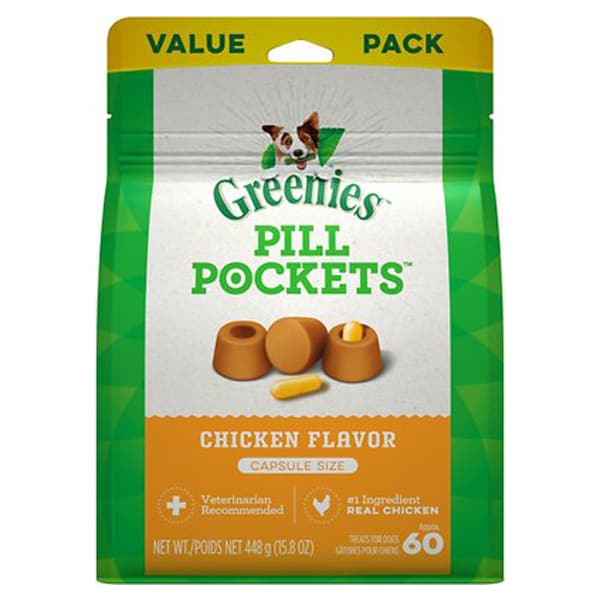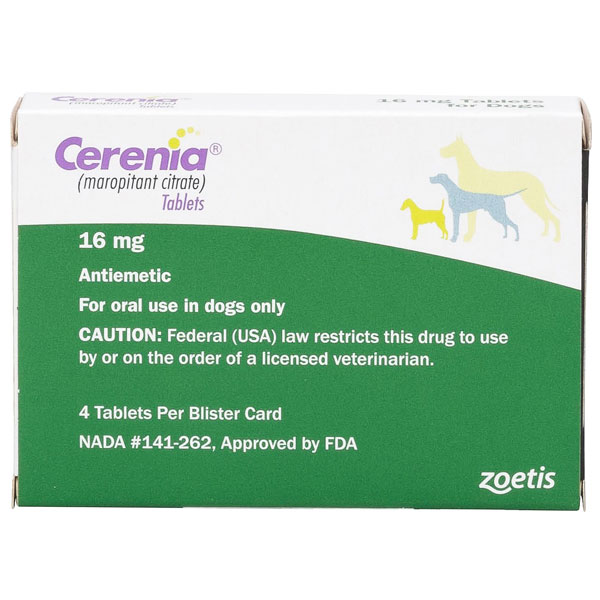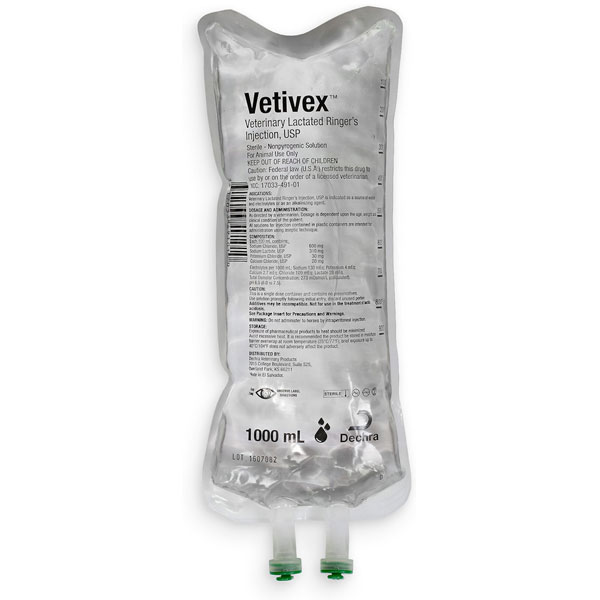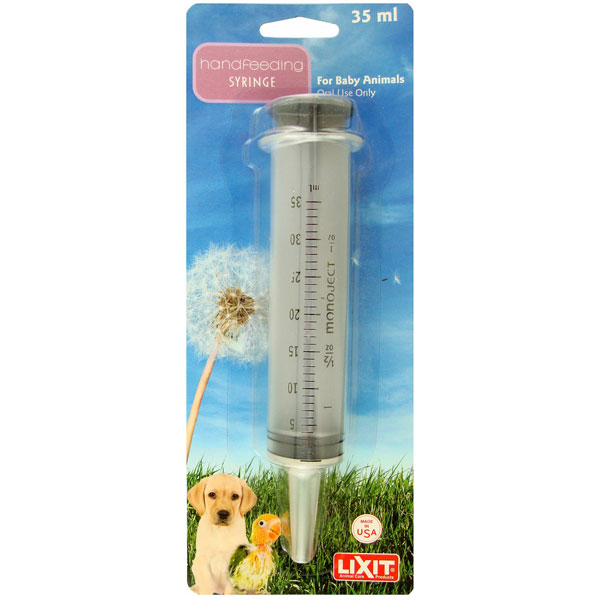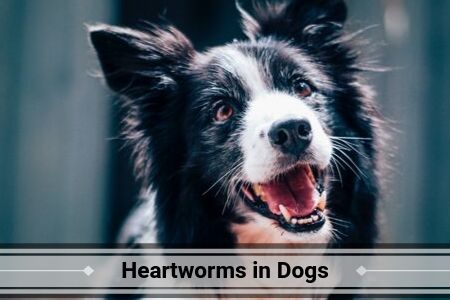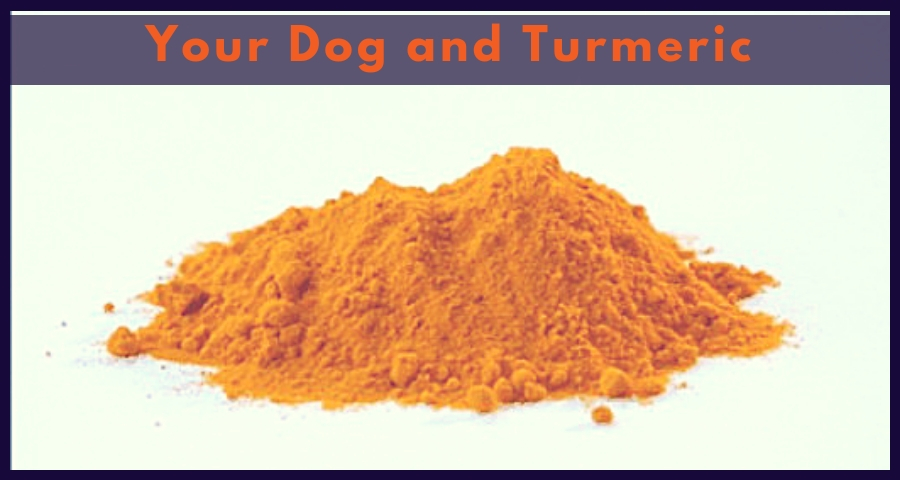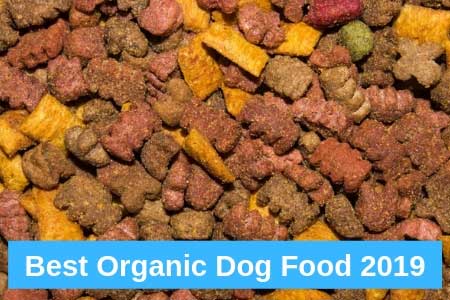Parvovirus in dogs is a scary disease and one that no dog owner wants to face. It only takes a few days for your new puppy to go from being perfectly playful and healthy to acutely ill. Parvo is preventable and treatable but to do that, you as a dog owner need to know about the risks of the disease, how you prevent your dog from getting it and what do you do if they do get it.
The dogs that are most susceptible are the young dogs who are between 6 weeks and 6 months of age, unvaccinated dogs and ones that only have some of their vaccination cycle completed. There are some dog breeds that are more at risk than others but there is no understanding why. However, it is good to know if your dog is on that list as you will be more mindful of the possible threat to their health.
What is Parvo?
Canine parvovirus (parvo or CPV) is a very contagious illness that makes dogs sick and can lead to death if untreated. Parvo presents in two ways. The most common type of parvo is one that infects the gastrointestinal tract (GI) of young dogs and puppies. It causes vomiting, diarrhea, quick loss of weight and takes away their desire to eat. The second form which is less common is the type that affects the cardiac system. This type of parvo goes after the heart of not only puppies but puppies who are not yet born. Either of these types of parvo can be fatal if left untreated.
One of the significant things that makes parvo so dangerous is its ability to spread through communities of dogs quickly. A dog can be spreading the virus for 4-5 days after their own exposure and they may show no signs whatsoever at the time. Once a dog has a full-blown case of parvo, they can still pass the virus on and then for another 10 days even after they are better. This ability to spread quickly highlights how important it is to get a quick diagnosis and very strict quarantine not only for your dog but for others who may be exposed to make sure it doesn’t spread to other unsuspecting and unprotected dogs.
It's important for puppy owners to be aware of the symptoms of parvovirus so their dog can be seen immediately if needed. Knowing the symptoms can mean prompt medical intervention that may save their lives. The symptoms include:
The type of parvo that attacks the intestines causes the dog's body to lose its capability to draw nutrition into their system causing the dog to become dehydrated and frail due to the fact they are not getting the proper protein and fluids. Redness may show up in the tissue of their eyes and mouth that are wet, and their heartbeat may become too fast. Their abdomen may be sore and causing them discomfort. Oddly, dogs who get CPV may actually end up with a low temperature versus a fever. They can become hypothermic (too cold) rather than too hot.
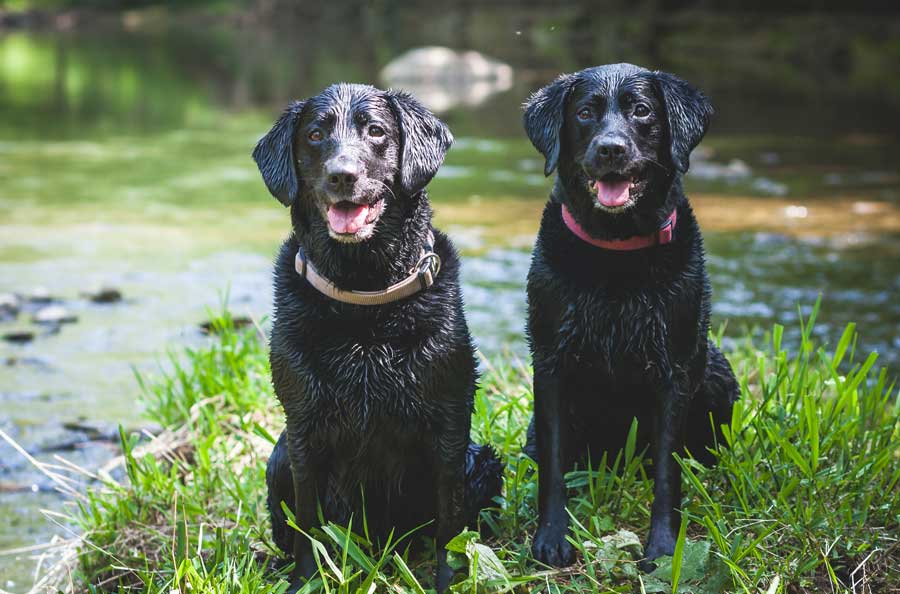
Parvo is highly contagious and spreads at an amazing speed within a dog population, especially if there are dogs that are unvaccinated.
CPV infections happen to a dog when there is a genetic change of CPV type 2b. There is more than one way that a dog’s risk is heightened when it comes to getting a parvo infection. Most of the time a dog gets it by either being in contact with a canine who has it or through eating or even smelling another dog's poop. The virus is found to be a significant quantity in a dogs’ stool who has been infected. Even if a dog sniffs that stool or the infected dogs' bottom, they can get parvo with these simple dog gestures. Parvo can also come into a home on the bottom of someone’s shoes if an individual stepped in dog dirt. Everyday normal occurrences and behaviors are problematic if there is an infected dog.
Even more startling is the fact the virus can survive outside in soil up to twelve months or on the surface of inanimate objects such as clothes, skin or dog items for up to 2 months. This means that your dog can get the virus by simply being in contact with anything that might have the virus on it. It doesn’t have to be a living thing. Parvo is such a strong virus that it stands up to the majority of cleaning items and weather leaving it waiting for a canine to come and find it. Cold and hot don’t damage its sustainability. The fact that parvo can survive in the ground for months on end is problematic as clean up is difficult when you know there has been a dog with the disease. These infected areas, indoors or out, must be thoroughly cleaned by picking up and getting rid of any organics from the infected dog such as poop, saliva or vomit. Then the area has to be bleached clean where possible. Bleach is one of the only items that will destroy the virus. Unfortunately, if you are a home who has a parvo infected puppy, you shouldn’t have another puppy join your family for quite a while due to the difficulty in getting rid of the virus.
Breeders and shelters are extremely problematic when it comes to parvo because of the large number of dogs in one place. Making it worse is the fact that these places have many young puppies that aren’t yet vaccinated against parvo. Along with these high-risk places, there are also certain canine breeds that seem to be at greater risk than others. Science has not figured out why this is the case. Breeds that include Rottis, Pit Bulls, Labrador Retrievers, and sled dogs seem to catch the disease more often. If you have one of these breeds, your vet may want them to have a longer vaccination cycle to be on the safe side.
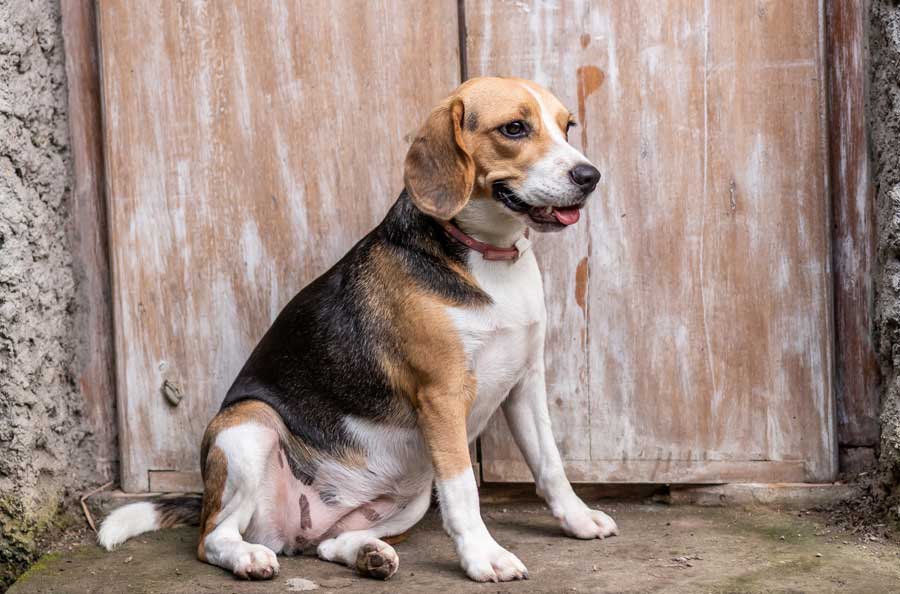
While the symptoms of parvo can be obvious and drastic, the vet will need a clear and verified diagnosis to treat the dog. This diagnosis is done through a physical exam, blood work and a test that specifically looks for the virus in the dog’s feces. Further to these early tests, the vet will do an analysis of the dog’s urine as well as x-rays and an ultrasound of the abdomen. These tests may show signs of white blood cell count that is low and dehydration which will signal the possible presence of CPV. Along with these signs, tests may show high enzyme counts in the liver, low lymphocytes in the blood and that the dogs’ electrolytes are not in balance backing up the first set of test’s findings. X-rays or ultrasounds can show blockages in the intestine, swollen lymph nodes throughout the body but even more so in the pubic area. They can also discover areas in the intestine that have too much fluid due to parvo. All these findings confirm the infection as well.
Along with all these tests, your dogs’ vet will want your pet’s health history, to know which vaccinations they have had or not had and what activities they have been participating in such as playing dog parks or doggy daycare. They will also want to know when your dog started exhibiting symptoms so they can estimate how far along this infection has gotten. These tests and diagnoses are not only important for your own dog medical health and treatment but for the other dogs that may have been exposed to your dog and potentially been infected as well.
Parvo is an infection that is viral and there is not a full cure that can fully address it. If a dog is diagnosed with parvo, their vet will try and work towards reducing symptoms while making sure there are no secondary bacterial issues. This is usually attempted in an isolation room in a veterinary setting versus home as the reduction of symptoms requires a strong medical regimen and ongoing support to get the young dog over the worst of it.
Your dog’s veterinarian will begin to treat their parvo infection with IV fluids and nutrition that will boost their ability to fight it. They need to do both these things to get your dog's body fluid back to where it should be after dehydration from diarrhea and general illness. They also need to make sure the dog has proper protein back in the system and electrolyte levels become stable. The dog will be watched closely as fluids and nutrition are reintroduced in the attempt to rebalance the system. Along with fluids and specific foods, dogs may get medications that will stop them from throwing up. These are given along with antacids, antibiotics and special meds to battle parasites called dewormers. Not every infected dog will need all these, but it depends on how severe their parvo case is and what symptoms their doctor is trying to combat.
Even with this aggressive medical intervention, the dog’s survival rate from parvo ranges around 70-80%. The mortality rate usually comes from the problems that go hand in hand with the dangers of dehydration and the possibility of a bacterial infection. When a dog’s body is already weak from diarrhea and dehydration, a secondary infection jumping in can overwhelm the dog’s weak body. They are also threatened by too many toxins in their blood and the possibility of an unstoppable bleed in their intestine. Hence, the sooner they are diagnosed and treated; the more aggressive treatment can be to stop these multiple secondary issues.
Sadly, the rate of survival from parvo is even less for young puppies as they haven’t had the chance to develop a strong immune system and often aren’t old enough for vaccinations. If young puppies get parvo they can go into shock and experience sudden death. However, it is noted that puppies that survive the first few days of having parvo will often make a complete recovery.
There are certain instances where a vet may let an owner treat their pup at home but with close input from their dogs’ doctor. While it takes around the clock care of a pup with parvo, some people just can’t afford to have their dog in the hospital for treatment long term as costs can range from $1500-$5000 depending on where you live. In a case such as this, a vet will often show someone how to care for the pup as the hospital would.
If you are treating your pup at home, your vet will show you how to give your sick pup extra fluids with electrolytes through IV and check their vital signs to make sure they are stable and not declining. You will need to administer medications to your dog such as Cerenia to help them stop throwing up and long term antibiotics to knock down the illness. It's helpful to have pill pockets to help your dog easily ingest any of these meds that might be pills. Your pup may need to be syringe fed glucose syrup to keep their energy levels high enough to fight the disease as well. Most importantly, your dogs’ vet will make sure the owner knows when to bring the pup in should they worsen and need further critical care.
Similar to humans who have had significant illnesses, a dog may heal from parvo, but their immune system is still very weak for an extended amount of time. This means there is a chance they will come down with further illness if they are exposed to them. They need to be kept away from places they can get sick, fed good food, clean water and offered a peaceful lifestyle while they continue to mend.
Not only is your dog needing further time to heal, but you also can’t let them infect other dogs. They may look fully healed but they can infect others for up to 2 months after their first diagnosis. If your family, friends or neighbors have dogs, you should let them know about your dog’s illness so they can have their dogs tested to stop it from spreading further into the canine community.
Making sure your pup is coming home to a safe place, means you need to wash all their toys, dishes, bedding and crate. Dishwasher, clothes washer should take care of it. Tossing things in a hot dryer after watching will help as well. Anything that can’t be cleaned that way should be washed with a solution of water and bleach or parvo cleaner. If an item is not cleanable such as bones and chews, then they should be thrown away.
One of the biggest things you can do to prevent your dog from getting parvo is to make sure they are vaccinated as soon as they are old enough. Puppies have antibodies from their moms, but these reduce as they get older, so they need vaccinations around 6 weeks old. They should have at least 2 sets of vaccinations by 10 weeks old, another before 16 and then boosters at one year old and every 3 years later. The other important prevention tool is to keep them away from dogs you don’t know until they are 2 weeks past their 3rd vaccination. This is critical for puppies as they can get a much more severe case of parvo that will put them in a life-threatening situation very quickly.
If your breed is a high-risk breed, then your vet may want them to have a longer period or vaccinations going up to almost 6 months. This also means keeping young dogs out of public areas like dog parks, pet stores and other places there are numerous dogs. Keep them safe and unexposed. If you know people with dogs that are healthy and vaccinated, then have them over to your place to play or vice versa but avoid anywhere there are dogs that you don’t know and are aware of their medical history.
Product Image | Product Name | Buy Now |
|---|---|---|
Performacide Kills Parvo Disinfectant & Deodorizer Kit | ||
Greenies Pill Pockets Canine Chicken Flavor Dog Treats | ||
Cerenia (Maropitant Citrate) Tablets for Dogs | ||
Vetivex Veterinary DEHP Free Lactated Ringers Electrolyte Injection Solution | ||
Lixit Handfeeding Syringe |
Picking up after your dog is really important as well in the ways of prevention. It stops your dogs home environment or walking areas from being contaminated and also lessens the chance that they will get gastrointestinal parasites such as parvo.
Final Thoughts
While parvo is a very scary disease to contemplate your dog having, it's important to be aware of it. Without awareness, you can’t take preventative steps to protect your dog and their local canine community. Taking steps for prevention, watching for infection and making sure there is proper veterinary treatment available for the sickness is important to your dog. Early detection is paramount, especially if you have a young puppy or litter as it will spread quickly not only becoming costly emotionally but financially as well. With early detection and care your dog will have a good chance of beating the infection and although it will not be cured, they will feel better and go on to live a healthy life that is symptom-free.


